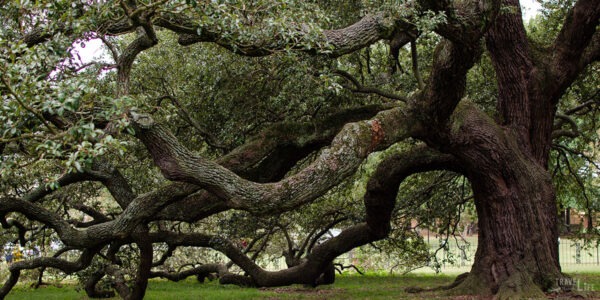When one looks into the history of Hampton, Virginia, the first things that usually pop up include the city’s burning during the Civil War. From there, most know of its rebuilding into a thriving seafood-driven community, colloquially known as “Crabtown.”
However, did you know that the history of Hampton also includes major moments in African-American history, including the first enslaved and first freed slaves?
That’s what we’re going to share here, starting with the first Africans in America, stories of their freedom from enslavement, and the education of America’s first free Africans.
While discussing each section or event, we’ll also share places you can visit in Hampton to learn more about them.
This post is part of our series on Virginia and other awesome places to visit in the US. We originally created it on November 20, 2019.
Uncovering the African-American History of Hampton, Virginia: 5 Places to Visit
Disclosure Note
Special thanks to Hampton Convention and Visitors Burea for hosting us during our stay. All opinions within this article are our own.
Fort Monroe: The First Africans
Fort Monroe was where the first African landing in America took place. It’s also one of the first locations where the enslaved were freed.
On a hot day in late August of 1619, the White Lion sailed into Hampton’s Point Comfort and traded “20 and odd” people for supplies to the Virginia Company.
The ship carried Kimbundu-speaking people who possessed advanced agricultural and industrial knowledge. They were kidnapped from Ndongo in West Central Africa. The Portuguese invaded Ndongo during a political crisis and captured what we now as the “First Africans.”
Virginia’s First Africans marched 200 miles from Ndongo to the port. There, slavers loaded them onto the San Juan Bautista set for Veracruz, Mexico. Before reaching Mexico, the English White Lion and Treasurer attacked them and stole the surviving Africans.
Visit the Site of the First African Landing
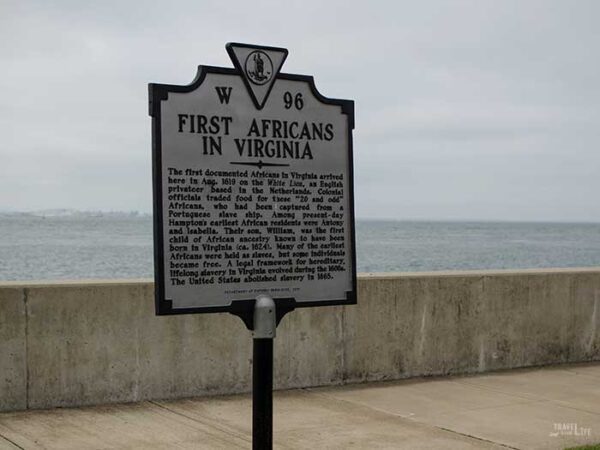
You can visit the location of the First African Landing outside the walls of Fort Monroe along the shore. There, you will find a historical marker with a brief history and you can look out into the waters, just like the First Africans did.
“20 and Odd” and Anthony and Isabella
The people aboard these ships had endured a long journey in tight and extreme conditions. Among those “20 and odd” who landed in America were Anthony and Isabella.
Captain William Tucker of Point Comfort acquired Anthony and Isabella and relocated them to his 150-acre plantation along the James River.
By 1625, Anthony and Isabella had a son, William Tucker, who was one of the first two African American children born in Virginia. He is actually considered the first because the other child has never been identified.
Anthony, Isabella, and William disappeared from the historical record after 1625. We do know their descendants are still living in the Hampton area.
The Tucker Family
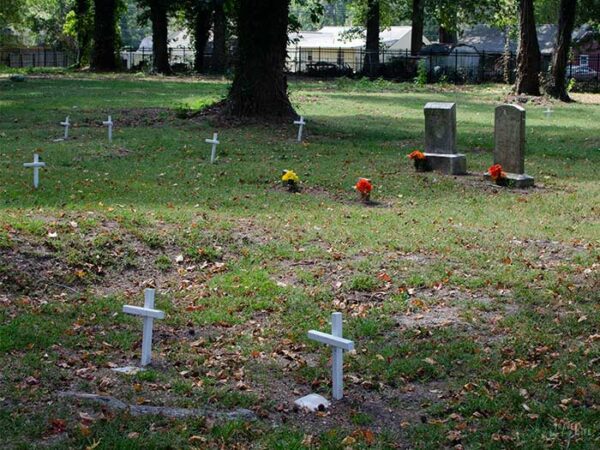
Today, the Tucker family is working hard to preserve their family’s history in Hampton. Part of this preservation is working to identify the graves that exist in what was a communal burial plot.
With gravestones dating as far back as the 1800s, the Tucker family knows that this plot could be where Anthony and Isabella’s descendants are buried.
Where to Find the Tucker Family Memorial
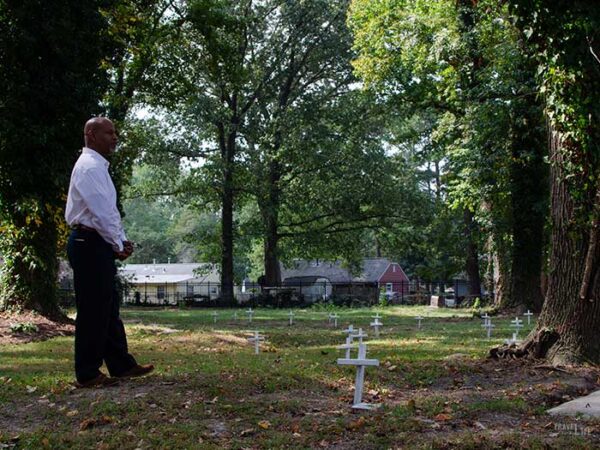
The Tucker Family Cemetery is located at 1 Sharon Court and visitors are welcome to come. However, please recognize that surveyors are still working to learn more about the land.
Fort Monroe
Years of enslavement passed and Point Comfort took on a new name. After the War of 1812, it was apparent that Point Comfort needed protection. In 1836, new barriers and classification rechristened it, Fort Monroe.
Sitting on the confluence of the Elizabeth, Nansemond, and James rivers, the moat-encased Fort Monroe was pivotal in defense during the Civil War. This six-sided citadel was the largest ever built in the United States.
While tensions rose and the Civil War started to break out in Confederate Virginia, Fort Monroe remained a Union stronghold. Confederate President Jefferson Davis served time here after his capture. You can see his cell and original artifacts inside what is now the Casemate Museum.
Freedom’s Fortress
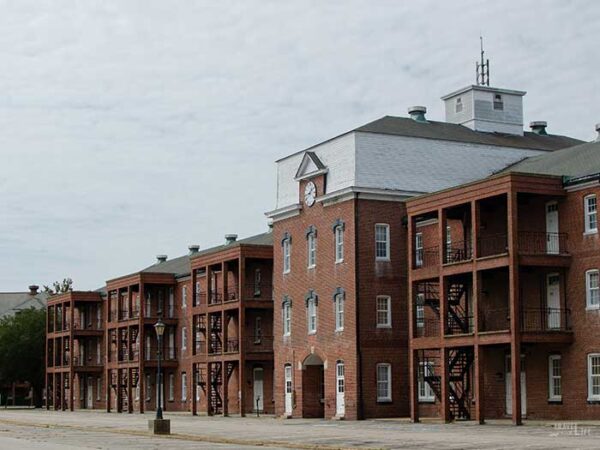
However, another more important turning point in America took place within Fort Monroe’s walls, further adding to the history of Hampton.
On May 27, 1861, Major Benjamin Butler declared that any slaves who escaped and reached Union lines would be considered contraband. That meant they didn’t have to return to their “Confederate owners.” The proclamation is known as the Fort Monroe Doctrine.
The result? Thousands of slaves fled to Fort Monroe, also known as “Freedom’s Fortress.”
This was the place where the first black man entered enslaved and walked out free. As you stroll through the gates of Fort Monroe, you can’t help but appreciate the fact that important moments in American took place here.
Where to Learn More about Fort Monroe
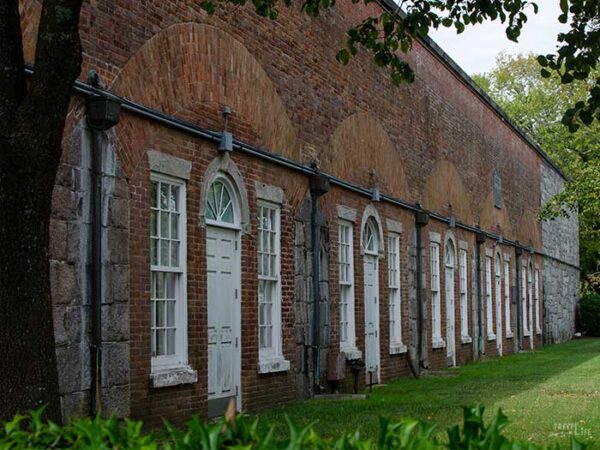
The Casemate Museum is located inside of the original fort. It’s a fantastic resource for the history of Hampton, as well as the United States. It is free to browse at your own pace.
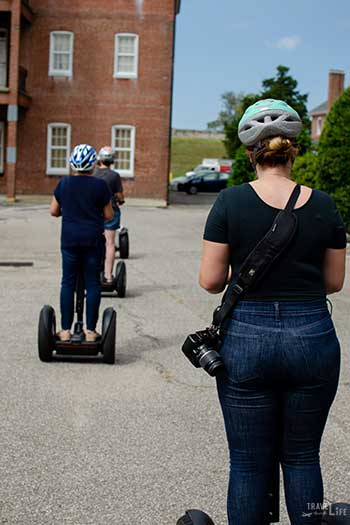
If you are looking for a more inclusive experience, hop on a Segway with Patriot Tours! They will take you around the inside and outside of Fort Monroe and give a detailed history and interesting facts!
Freedom for All
So many enslaved people were escaping to Fort Monroe that by the fall they needed to build a new camp to house everyone. Prior to the Civil War, slaves were not allowed access to education. However, with the Fort Monroe Doctrine, that was no longer the case.
The Emancipation Oak
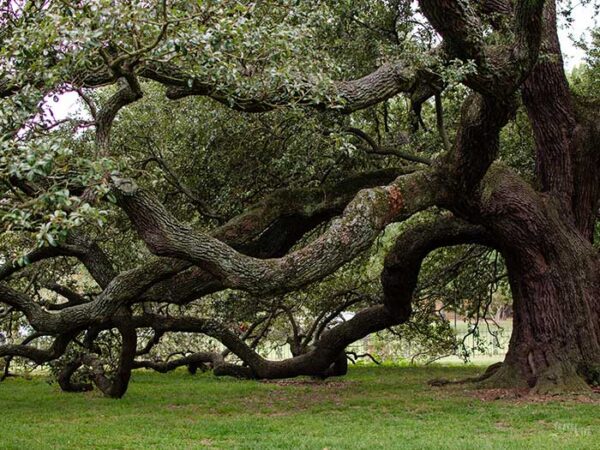
The American Missionary Association brought in the first black teacher, Mary Peake, to teach the children there how to read and write.
Two years later, under the shaded canopy of a large oak tree, the community of free people gathered to perform the first Southern reading of the Emancipation Proclamation.
Now called the Emancipation Oak, this site is now a cornerstone of Hampton University’s campus and has received recognition for its importance from organizations throughout the world.
Where to See the Emancipation Oak
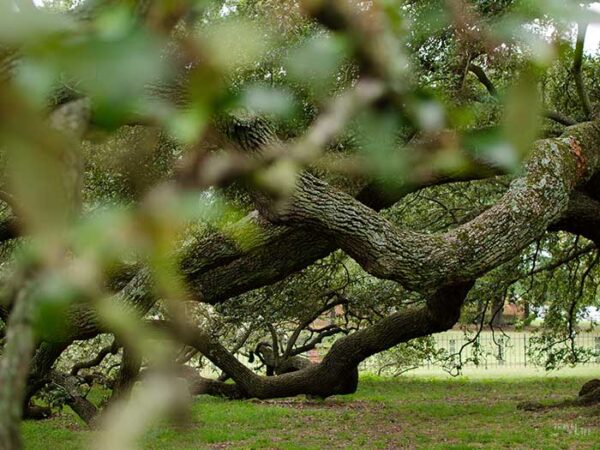
The Emancipation Oak is near the entrance of Hampton University. A fence partially surrounds the front of it. Stop and read the marker in front before heading around the back for beautiful views.
Our Thoughts and Yours, Too
The city and people of Hampton are working hard to make sure these stories continue to reach visitors and residents alike. It’s something that many places throughout the US could look to as an example.
I wish some would realize that when we learn the history of America, many stories are left out. Honestly, if we’re not teaching kids and history students the story of “20 and odd” and Freedom Fortress in places like Hampton and elsewhere, we aren’t telling the whole story of America.
Stories like Anthony and Isabella’s show us the resiliency of the African narrative. It also demonstrates the reason narratives like these should be highlighted just as much as, if not more than, the settlers in Jamestown.
I don’t think one should have to travel to Hampton, Virginia to learn these stories, but I’m grateful that I did. Seeing these places in person is a wonderful reminder that we, as Americans, are a combination of so many cultures’ stories that aren’t being told.

